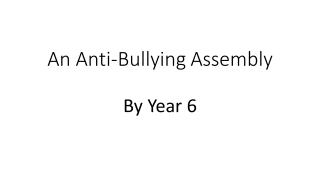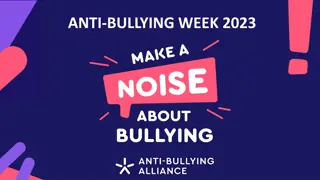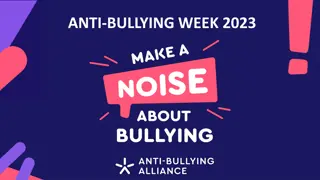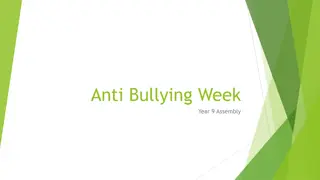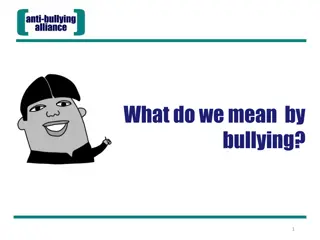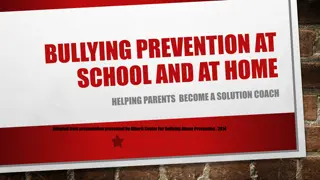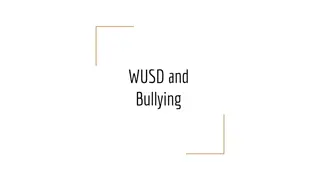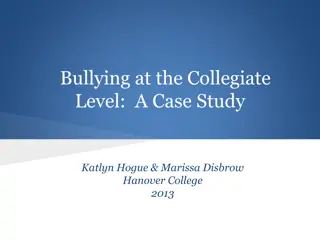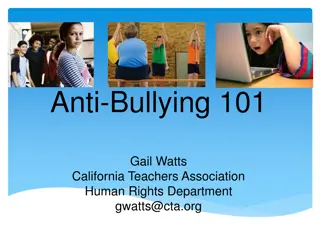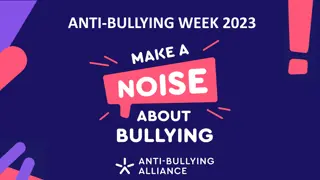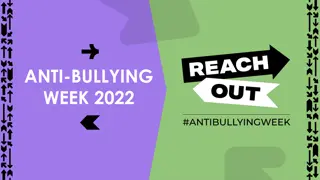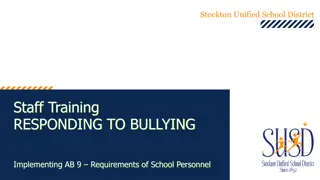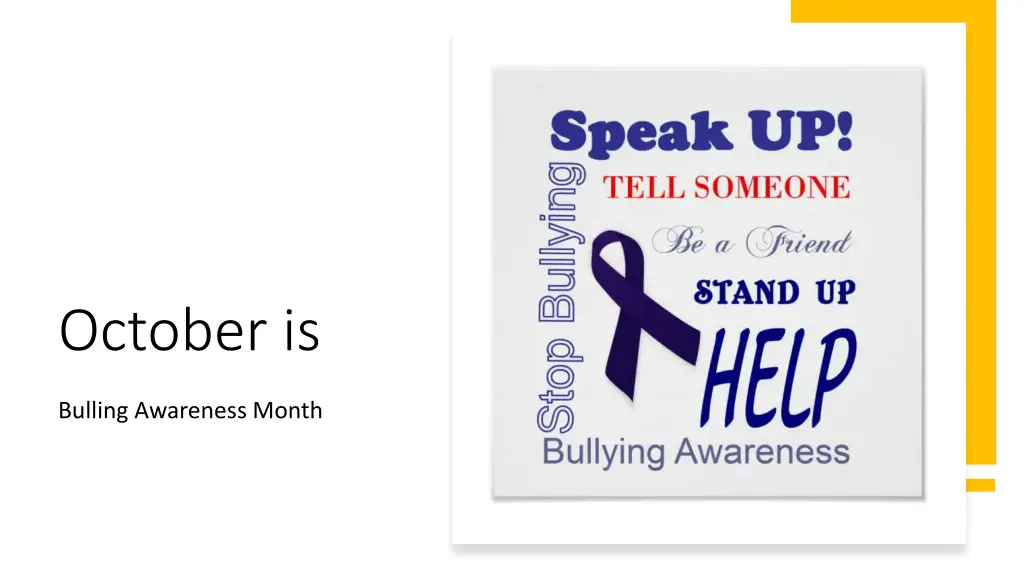
Prevent Bullying: Awareness and Prevention Strategies
"October is Bullying Awareness Month. Learn how to prevent bullying every day at home and school. Address bullying effectively and provide support to youth facing bullying situations. Take action against bullying for a safer environment. #BullyingPrevention"
Download Presentation

Please find below an Image/Link to download the presentation.
The content on the website is provided AS IS for your information and personal use only. It may not be sold, licensed, or shared on other websites without obtaining consent from the author. If you encounter any issues during the download, it is possible that the publisher has removed the file from their server.
You are allowed to download the files provided on this website for personal or commercial use, subject to the condition that they are used lawfully. All files are the property of their respective owners.
The content on the website is provided AS IS for your information and personal use only. It may not be sold, licensed, or shared on other websites without obtaining consent from the author.
E N D
Presentation Transcript
October is Bulling Awareness Month
Prevent Bulling Prevent Bulling Everyday Everyday As reported on the 2019 Indicators of School Crime and Safety report, about 20% of students ages 12-18 reported being bullied in 2017. Among students ages 12-18 who reported being bullied during the school year, 15% were bullied online or by text. National Bullying Prevention Awareness Month is a month-long observance to educate and raise awareness about bullying and cyberbullying prevention. Addressing and preventing bullying is something that everyone can do, every day.
Talk About Bullying At Home Talk About Bullying At Home Parents and caregivers can talk with their children about their school and digital life, and the many roles children can play in bullying. By asking open-ended questions, they can talk about their children s experience and communicate expectations about appropriate behavior in person and in their digital world. Parents are the primary role models for their children, and when they model the behavior they expect from their children, they teach through actions.
Address Bullying At Address Bullying At School School Educators and teachers can create a safe, supportive learning environment and a classroom culture of positivity, inclusiveness and respect. They can reward students for positive social behavior. Schools can communicate bullying policies at their school to parents, students, teachers and staff and follow through on them. Monitoring bullying hot spots around the school campus can also help prevent bullying.
Get Help Youth who experience bullying can reach out to a trusted adult to talk about it and get support. If they re being cyberbullied, they can capture screenshots. They can block the people who are bullying. If they witness bullying, they can change the conversation and deflect it. If they feel they can do it, they can stand up for the person being bullied, either on their own or with friends as a group. If they don t feel safe doing that, they can reach out to the person being bullied to let them know that they don t agree with it. If youth witness cyberbullying, they shouldn t participate or share the posts or texts. They can learn more about how bystanders are essential to bullying prevention. They can also talk to a trusted adult for advice.

